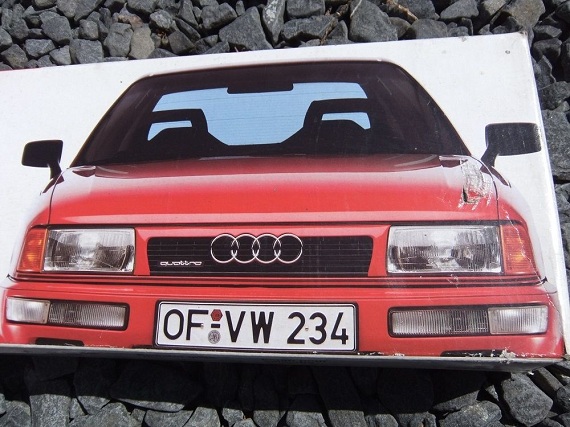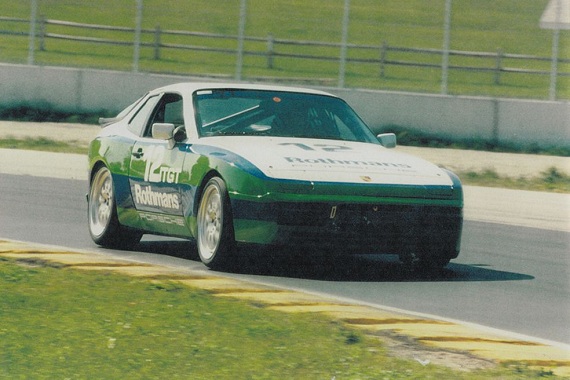Time for another roll call of some neat accessories I spotted for sale this week. The Votex items are extremely rare to find, even if their styling is somewhat polarizing. For a factory look, the W124 AMG rear spoiler needs refinishing but is an original piece. The Nürburgring brake package was a factory option that Dinan used as a “Big Brake” package for many BMWs, but originally came on either the M5, 540i M-Sport or 850CSi. Finally, there’s a set of Ruf pedals for your 911/964/993 just to finish things off. What’s your favorite?
Author: Carter
I won’t bore you with an attempt to fully recount the storied history of the M1 here. But there are some interesting developments that helped create this halo car, changed its purpose and created the car that you see here. The M1 is a legendary car that, like the 959, 190E 2.3-16V Cosworth, RS200 and some other notable historic cars was born into a world that had already passed it by. It seems that often these ultimate cars have come about when the series rules have changed, and the M1 was part of that. The 959 moved from Group B to Le Mans, running high overall both attempts that it ran. The 190E took to the race track instead of rally, creating a new motorsports legend in the process – who can forget the images of Senna in the 190E? The RS200 moved towards the popular European sport of Rallycross, where it was extremely successful. And the M1? Well, the M1 was a bit lost; BMW had to build 400 of the expensive machines in a bit of a global recession, so they decided to make a one-make race series called the Procar series. Of course, it didn’t hurt that BMW was attempting to get its foot in the door with F1 management as an engine supplier, and the promise of the spectacle of F1 drivers let loose in supercars before the real race sure sounded appealing. What it was, most of the time, was a train wreck of crashes – but it was entertaining for sure, and they ended up building enough M1s to go racing where the car was intended, in Group 5 racing. While BMWs interests and technology passed by the M1 in the early 1980s, there was nevertheless a group of individuals who wanted their M1s turned up in the style of the wild winged, wide fendered and massive wheeled Procars. The result were the 10 AHG Studie cars:
CLICK FOR DETAILS: 1980 BMW M1 AHG Studie on EBAY
Comments closedFor generations, we in the United States have been unjustly denied the most versatile of the fast BMWs – the M5 Touring. From its genesis in the E34 Touring through its evolution to V10-powered monster E60, the M5 Touring has remained one of the most desirable unobtainable German cars to U.S. enthusiasts. However, U.S. fans shouldn’t feel too discriminated against, because the fan favorite E28, E39 and even the new F10 have no touring option – anywhere. What is a lover of fast BMWs with 2.2 children and a dog to do? Well, you could take your E39 Touring to Dinan, who would be more than happy to turn the wick up for you:
CLICK FOR DETAILS: 2001 BMW 540i Touring Dinan Supercharged on eBay
7 CommentsEdit: One of our Facebook readers – Steve – correctly noted that this is Capri Green and was an 8V Golf to start out. In some ways, that makes it better that a real 2.0 GTi wasn’t sacrificed, though my feelings about most of the modifications stay the same. Thanks Steve, and sorry for the mistake!
I’m fairly certain that with the right backing and skillful marketing I could pitch a show to one of those crappy cable networks. My premise? Take a car that has been modified and return it to OEM or OEM+ standards. Seriously, when talking about rare cars, aren’t there buyers for these rides? Don’t there seem to be lots of people endlessly browsing the internet looking for that hidden, unmodified and well-cared for gem that rarely surfaces? Heck, it’s what we’ve built a fair amount of our writing around. And even though there are plenty of people pining for original BMWs, Mercedes-Benz and Porsche models, there’s a special lot that love original Volkswagens. One of the biggest reasons they long for these “unicorn” models is that so few were properly cared for, and many of those that were have been modded within an inch of their life. Take the Mk.II GTi; a solid performing replacement for the “original” hot hatch. It’s near legendary status is well cemented in the halls of automotive history, and it’s even one of the few models that carries brand awareness outside of motoring circles. Seriously, even people who know almost nothing about cars know what a GTi is. Within the Mk.II crowd, there are several limited models that the U.S. didn’t receive, so our top of the heap has to be the 1990-1992 16V edition. With a close-ratio gearbox, revised and better integrated smooth big bumpers, the best set of BBS wheels and Recaro seats ever fitted to a Volkswagen and one stunner of a revy 2 liter inline-4, it was an awesome package. Specify it in Montana Green, and you’ve got the crowds drooling. Then someone goes and does this:
CLICK FOR DETAILS: 1992 Volkswagen GTi 16V G60 on eBay
4 CommentsLast week, I wrote up a 944 Rothmans Cup car, a model that introduced the idea of a factory-backed, one marque race series as an opener for larger races. In truth, this was no new concept; the unused M1 race cars got turned into the “Procar” series in the late 1970s/early 1980s and run with F1 drivers before races, as well as prior forays by Porsche in the IROC series. But the 944 Rothmans Cup was an effort that any gentleman driver could partake in, and that made it a bit more special. While the racing was close for sure and generated plenty of great action, the lightweight 944s really weren’t particularly fast in the grand scheme of things. Having launched a new Turbo model of the 944 in 1985, Porsche nearly immediately started development of the Cup version of the 951. With sealed motors pushing a bit more power that stock thanks to some revised engine mapping, catalyst-free exhaust and a revised magnesium intake, the real gains came in further use of exotic materials to lighten the cars. While the regular 944 was a bit lighter, the Turbo Cup went the next step; lightened suspension, magnesium wheels, stripped interior and plastic pieces. Undercoating was never installed on these cars and as a result of many small changes, the 944 Turbo Cup weighed in some 400 lbs less than the roadgoing version. Even with a modest power increase, this made for one potent and very special race car:




